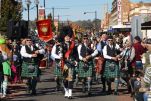VisitLiveInvest
There are so many reasons to explore, consider moving to and contribute to the prosperity of our community - it's where you'd rather be!
Visit - Glen Innes Highlands is packed full of adventure and experiences with distinctive seasons, gourmet foods along with its picturesque town and villages – a great place to stop for a family holiday, meet up with friends at one of our many events or enjoy a relaxing escape.
Live - Whether you are returning home or looking for a tree change, you’ll feel welcome in our friendly community. Enjoy a quality lifestyle with affordable housing, health services, education options, retail and professional services and career opportunities to meet all your needs.
Invest - In Glen Innes Highlands we are committed to and supportive of new ideas, industries and opportunities that contribute to our local and regional economy. For a region rich in heritage, we are continuing to attract a broad range of businesses and investors leveraging and capitalising on our endowments.



Our Celtic History
Glen Innes Highlands has a long association with Celtic pioneers and was adventured by John Oxley who discovered the New England Area in 1818.
Twenty years later, Scottish Barrister, Archibald Boyd, registered the first run in what is today known as Glen Innes Severn Area. Before leaving Sydney, Boyd was given the tip to get in touch with the ‘Beardies’ who were familiar with the area, good bushmen and interested in earning a few bob guiding new land seekers.
The ‘Beardies’ were two stockmen with long, flowing beards who roamed the vast, untamed plains of New England when Australia was young. The stockmen were John Duval and William Chandler. Their names live on in Glen Innes Highlands’ folk museum – one of Australia’s finest, in the Land of the Beardies Museum, Beardy Waters and the town’s water supply, and on county maps featuring the parish of Beardy Plains. It was through the efforts of another Scot, Archibald Mosman, that the town became known as Glen Innes.
Major Archibald Clunes Innes was the commandant at Port Macquarie, and had extensive station interests including the station of Furracabad, on which the town of Glen Innes was built. Major Innes changed the name of the station to Glen Innes. When Innes became bankrupt in the depression of the 1840s, the station was taken over by the Bank of Australasia who later sold it to Archibald Mosman (after whom the Sydney suburb was named).
When the town of Glen Innes was gazetted, Mosman changed the name of the station back to Furracabad. Glen Innes continued to flourish and when the Great Northern Railway came through in 1884, it prompted the construction of some of the town’s most substantial buildings that lend character to the town today, especially in the main street of Grey Street, which is lined with more than 30 heritage-listed buildings.
The Uniting Church honours a pioneering minister who was robbed by notorious bushranger, Captain Thunderbolt, and the deed for the original St Joseph’s Convent was signed by Australia’s first saint, Mary MacKillop.
For more information on the history of Glen Innes Highlands, visit the Land of the Beardies Museum & Research Centre.
Climate & Weather
Glen Innes Highlands is well known for crisp winters and cool summers, typical of the surrounding New England region that experiences distinct seasonal changes.
During Summer, you will find relief from the heat and enjoy our many waterways for a swim. The average maximum temperature in summer is 26 degrees and the minimum is 12 degrees. Summer is also the time when we experience our highest rainfall of about 100mm a month.
In Autumn you will be greeted by our golden and fiery autumnal colours. The average maximum temperature is 20 degrees and the minimum average can get to just below ten degrees. Autumn rainfall is half of our summer rainfall of around 40mm a month.
Winter is very cool in Glen Innes Highlands and the perfect way to experience it is rugging up and enjoying a wine next to an open wood fire. There’s also the chance of a dusting of snow, which sporadically occurs throughout our winters. The average maximum temperature in winter is a crisp 14 degrees and the minimum average is a very cool 2 degrees. You can expect about 50mm of rain per month in winter.
Spring weather in Glen Innes Highlands ranges from cool days (similar to our winter climate) to warm swimming weather (much like our summer season). The average maximum temperature in spring is 20 degrees and the minimum is 9 degrees, with about 75mm of rain per month.











Culture & Community
Glen Innes Highlands is a very close-knit community that embraces visitors and newcomers to town.
Locals talk about the many opportunities to get involved in their community, including the surprising number of events throughout the year, as well as the numerous social and special interest groups and community organisations.
A variety of cultures are celebrated locally by community groups and events throughout the year. The Caledonian Society embraces all things European and Celtic, while local community groups run events such as Harmony Day to highlight and celebrate the various cultures that make up our society.
For more information about how to get involved in our local community and special interest groups, click here.
Arts & Crafts
Arts and crafts thrive in Glen Innes Highlands. Take a few hours or days to explore the many galleries, artists, crafts stores, antiques, museums and treasures around town where locals are working to keep traditional crafts alive.
Aboriginal Arts & Craft - Glen Innes Highlands has several noted Aboriginal artists, including Lloyd Gawura Hornsby, Nicholas (Nick) Levy, and Adele Chapman-Burgess.
Local Arts, Craft & Handmade - You will find crafts being practiced locally that date back to the area’s pioneering days, such as saddlers, blacksmiths and farriers. Discover 12 ways to get your craft on in Glen Innes Highlands.













Food & Produce
Glen Innes Highlands is traditionally a high rainfall area, which, combined with a cool climate, soils and temperate pastures, means we’re noted for our fine wool, lamb and beef production.
If you love beef, lamb and pork, don’t leave Glen Innes Highlands without savouring the superb New England products from our three butchers Campbells, Hoopers and Bruce Family Butchery.
Glen Innes Highlands’ bakeries take pride in their creativity when providing a wide range of breads, pastries and other foods with a focus on locally sourced ingredients.
Find out more about local gourmet food & beverages.
The Super Strawberry, on Glen Innes Highlands’ southern outskirts, produces and sells fresh strawberries, strawberries and cream, jams, sauces, milkshakes, coffee, Guyra tomatoes, locally-produced potatoes and eggs, and giftware.
Free-range eggs produced under the River Gum and Sarah Downs labels are available in Glen Innes Highlands, as well as extensively throughout NSW and Queensland.
Regional produce such as olives, olive oil, honey, and homemade preserves are sold at the Glen Innes Visitor Information Centre and other local retail outlets.
-
Partner with us
- Add your business
- Use of GIH logo
-
Related Sites
- Glen Innes Severn Council
- Glen Innes Highlands Hub
Acknowledgement of Country
Glen Innes Highlands acknowledges and pays respect to the Ngarabul people as the traditional custodians of this land, their elders past, present and emerging, and to Torres Strait Islander people and all First Nations people.
Terms & Conditions | Privacy | Disclaimer
2025 © All Rights Reserved. Website designed by gocrossmedia and built by Cloud Concepts












